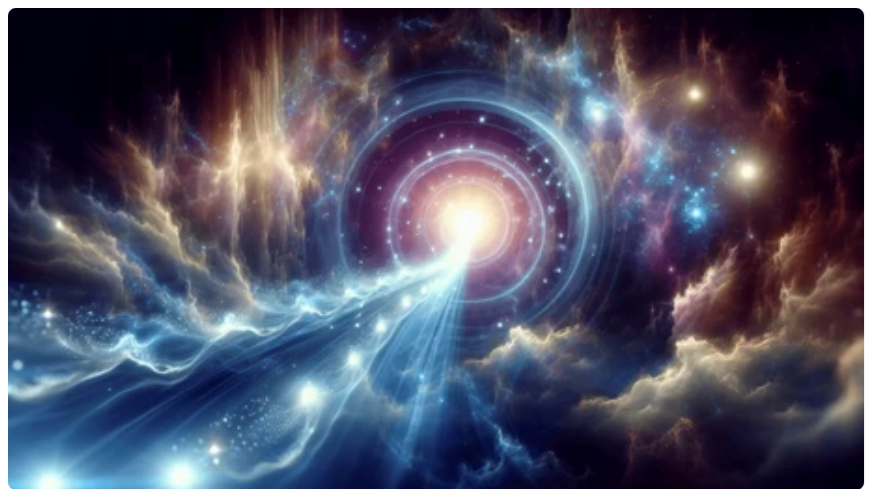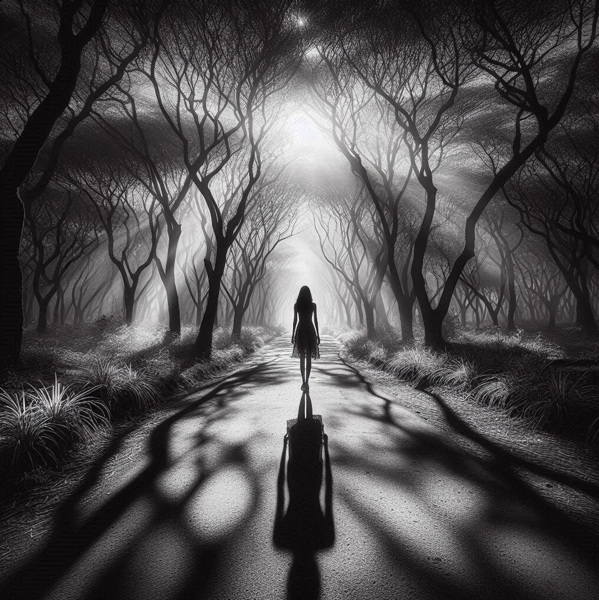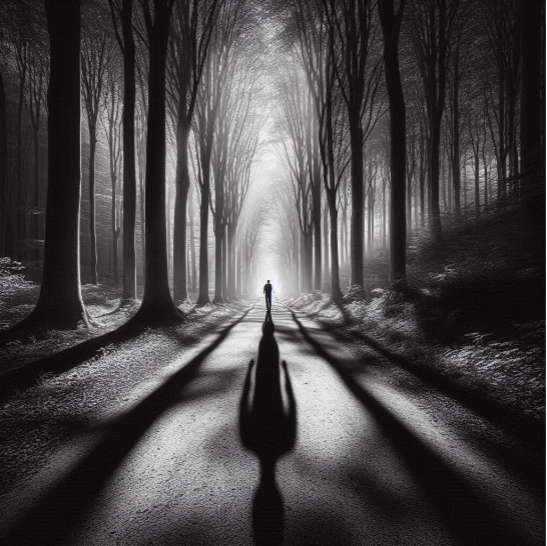June 2025
Editorial by :christine: Core
“Insha’Allah” “إن شاء الله“
‘Push against it and life feels stuck,
Try to outwit it and you feel hurt,
Pretend it’s not true and you’ll feel lost’
What am I talking about???
As most of you know I made Egypt my home from 2005 until 2012. After that my base was the UK, but I visited my villa regularly, it’s my second home. Luxor is an alluring place that keeps calling me back.
‘Insha Allah’, those words were at the end of nearly every sentence I heard in Egypt. Everything that referred in the future was ‘Insha Allah’, This is the Muslim affirmation that the divine is in charge. For those with a Christian background we would say “God Willing”. More commonly heard today particularly in New Age Spiritual groups is the phrase “It is meant to be”. The famous Scottish poet Robby Burns wrote “The best laid plans of mice and men often go awry.” (‘go awry’ means ‘go wrong’) pointing to the fact that however carefully we plan, however hard we try something will only unfold in its Divine timing and in line with our Divine purpose.
We are so trained from an early age to take responsibility, try hard and do our best. But this is the opposite to our role when facilitating a healing. The guidance for a healing is to firstly witness if we have an agenda and if so to let it go. We then connect to the recipient and call in the Angelic beings and just allow; nothing to do, no responsibility to take, no protocol to follow. Most workshop participants find this hard to do at first but with practice trust is found and letting go is easier. In the manual it says, ‘Not my will but Thy Will’ and we refer to the ‘non-doing’ space.
Who is in charge if you are not? It can be a scary thought to not be responsible, not in control, but again if you are not accountable, who is? This is not an invitation to be careless, reckless or irresponsible in the way we live our lives. It is to recognise that our loving Divine self or Soul self and not ego driven agender. Our responsibility is to be self-aware enough to know when we have allowed the separate-self ego to be in charge and when we are acting from our higher self.
I think you will agree that synchronicities only happen when you were not the organizer, and don’t they feel good and magical.? Perhaps you have, but I do not know of any that in the fullness of time have not been a gift. Isn’t that a curious fact that when we are not in charge, things turn out well. The question remains, Who’s ‘will’ was it, what organized the synchronistic event.
Could it be that creation, by its very nature, is self-organising in accordance with its creator? That would make sense. Even though we may have different names and concepts of the source of creation, God, the Divine, Source etc., we all know it when we feel it. The Angelic Kingdom is the movement, the shaping and patterning and expression of creation. We have all felt it and experienced it.
What if the space that we hold in an Angelic Reiki healing is the same space from which we could live life. I believe that that is the highest invitation with grace that we can hold.
Now to confession time. I had a vision of a member’s section on the web site in about 2018. It would support all our members especially the teacher, it would have information and answer questions and especially the public pages where Master Teachers and professional practitioners could write their bio, publish their contact details and geographic location and connect to the public enabling prospective clients and workshop participants to fine a practitioner or class. I have said that it is coming soon for about the last four years. Angela and I have worked devotedly to make this happen so why isn’t it there? It’s not there because the very principles of Angelic Reiki that it is divine will not my will that oversees this member portal. How could it be different for Angelic Reiki?
“The best laid plans of mice and men often go awry.”
Christine
Shadow (Part 1)
By Sara Neves de Sousa
Shadow is a funny word.
And it truly is, an ordinary term that stretches from sidewalks to spirituality, from physical outlines to deep psychological landscapes. The shadow, in the most literal sense, is nothing more than the dark shape cast by a body blocking light. But symbolically, it is everything we avoid, project, or forget, yet remains inextricably part of us. And perhaps more than anything, it reminds us of the interplay between light and dark.
Let us begin in the visible world, where the metaphor is born.
Artists have long understood the secret of the shadow. In drawing and painting, shadow is not a mistake, it is what makes realism possible. During the Renaissance, the technique of chiaroscuro, from the Italian chiaro (light) and oscuro (dark), revolutionized Western art. It introduced a dramatic contrast between light and dark to create the illusion of depth and volume. In the works of Caravaggio, Rembrandt, and da Vinci, shadow became the silent architect of form. “Where the light fails,” Leonardo da Vinci wrote in his notebooks, “it leaves a darkness which we call shadow.”
This interplay is not merely technical but deeply psychological. A face is made real not by its outline, but by the areas we cannot fully see—where the light gives way to something hidden. As John Berger notes in Ways of Seeing, every act of depiction is also an act of omission: what is not shown matters as much as what is revealed.
Shadows, then, are not voids. They are presence-in-absence. A sculpture is carved by taking material away, and yet it becomes whole. The same applies to human nature. What we repress or hide, the unspoken, the unclaimed, often defines the shape of our lives far more than we admit.
The Shadow Walks Beside Us, every person has a shadow in the literal sense, visible when light strikes us at an angle. And the way shadows behave reveals much. Sometimes it leads us; other times, it trails behind. It disappears under a noonday sun or stretches long during twilight. The same person casts a hundred different shadows depending on time, place, and perspective.
As children, we may even play with our shadows, delighting in how it mimics our movement. But as we grow older, we forget its playful magic and begin to experience metaphorical shadows: doubt, guilt, shame, unfulfilled desires, parts of the self that follow us unbidden.
The poet Robert Louis Stevenson once wrote:
“I have a little shadow that goes in and out with me,
And what can be the use of him is more than I can see.”
This poem rings more existentially true the older one becomes.
We can see shadow in culture and myth too. Nearly every culture in human history has imbued shadows with meaning. In ancient Egypt, the shut, one’s shadow, was considered part of the soul, as essential as the heart or the name. It was thought to travel with a person into the afterlife.
In Greek mythology, shades (skia) are the souls of the dead in the underworld—reduced to shadows of their former lives. In Homer’s Odyssey, Odysseus sees his fallen companions as ghostly outlines, lacking substance or agency. They are literal shadows of themselves.
In the Bible, the “valley of the shadow of death” (Psalm 23:4) is not just a poetic flourish. It evokes the liminal space between life and the unknown, where fear and faith collide. Even here, the shadow is not evil, but rather the form of something greater: the presence of mystery.
Scientifically, shadows are simple: the absence of direct light. But even here, metaphor lurks. Light travels in straight lines. When an object interrupts that path, a shadow forms. Yet, because of diffraction and light scattering, shadows are rarely absolute. Edges blur. The closer the object is to the light source, the more exaggerated its shape.
This mirrors human perception. The closer we are to our inner “light”, to truth or clarity, the more exaggerated our fears and blind spots may become. Jung observed this dynamic in his notion of the “shadow self,” but even without psychological theory, the metaphor resonates. What we hide distorts. What we reject grows longer.
“The brighter the light, the darker the shadow.”
There’s also the nurturing side of shadows. On a hot summer day, we instinctively seek shade, a patch under a tree, even the shadow of a building. In many cultures, rest and reflection occur in shaded places. In Hindu temples, the sanctum (garbhagriha) is intentionally shrouded in darkness to symbolize the cosmic womb, a place of rebirth and reflection.
So the shadow is not merely absence or negation. It can be comfort, clarity, coolness.
The 20th-century poet T.S. Eliot famously wrote:
“Between the idea
And the reality
Between the motion
And the act Falls the Shadow.”
Here, the shadow is neither artistic nor physical, but existential. It is the distance between intention and outcome, self-image and behavior, ideal and reality. It is where humanity resides, in the gap between what we hope to be and what we are.
And yet, without this gap, without the shadow, there would be no growth, no striving, no transformation.
The shadow begins as a mundane visual phenomenon, but quickly reveals itself as a metaphor of depth, absence, comfort, distortion, and mystery. It has walked with us since we first stood upright under the sun. From artists’ canvases to sacred texts, from myth to science, the shadow proves essential to understanding not only how we see the world—but how we see ourselves.
When I decided to write about shadow, I thought it was going to be a one article thing and that’s it, but then I saw that only an article wouldn’t be enough, so this is Part 1 and in this Newsletter there is Part 2, and in the next ones there will be more. How much more? I don’t know, but probably until the end of the year.
Love Blessings
Sara
Sara Neves de Sousa
Angelic Reiki Master Teacher, New Shamballa Master Teacher and Golden Heart
Merkabah of Creation Master Teacher
Shadow (Part 2)
By Sara Neves de Sousa
In Buddhist philosophy, the notion of a “shadow” as understood in Western psychology is not named in the same way, but it is ever-present. Rather than a “shadow self,” Buddhism speaks of avidyā (ignorance), kleshas (mental afflictions), dukkha (suffering), and upādāna (clinging). These concepts refer to the unseen mechanisms behind suffering, the unconscious drives, attachments, and delusions that create the conditions of spiritual bondage. In many ways, these afflictions are the shadow, they are what we refuse to see, and therefore, what governs us most.
Avidyā: Ignorance as the Root of Suffering
In the Pāli Canon, the Buddha teaches that suffering arises through a twelve-linked chain known as Dependent Origination (Paticca Samuppāda), and the first link in that chain is avidyā, ignorance or unawareness. This is not simple “not-knowing,” but rather deliberate or habitual un-seeing, a conditioned blindness to the way things truly are.
The Buddha said:
“It is through not realizing, not penetrating this Dhamma, that beings have become like a tangled skein, like matted reeds, like grass and rushes.”
Ignorance, in this case, casts a long shadow: it obscures reality and keeps one bound to samsāra, the cyclical suffering of birth and death.
In modern psychological terms, avidyā can be likened to repression or denial—the refusal to face what is real, whether in the world or within ourselves.
The kleshas, traditionally five main afflictions, include:
- Ignorance (avidyā)
- Attachment (rāga)
- Aversion (dveṣa)
- Pride (asmita)
- Clinging to life (abhiniveśa)
These are the mind’s shadows: obscurations that distort perception, emotion, and behavior., these, form habits that become unconscious drivers. They are not evil in themselves, but they are dangerous when left unexamined.
In The Tibetan Book of Living and Dying, Sogyal Rinpoche explains that “the problem is not the emotions themselves but the attachment to them, the way we solidify them and allow them to define us.”
Shadow work in Buddhism, then, is not a war against darkness, but a conscious turning toward it, and seeing it clearly.
This are some examples that the Buddhist path offers, structured methods to confront these inner shadows, through mindfulness meditation, by observing thoughts, feelings, and sensations without judgment, practitioners begin to recognize the patterns of grasping, aversion, and delusion. Insight arises when these patterns are seen clearly as impermanent, unsatisfying, and non-self.
In Feeding Your Demons, Lama Tsultrim Allione, a Western teacher in the Tibetan tradition, adapts ancient Chöd practices into modern shadow work. The premise is simple and radical: instead of fighting your fears and inner “demons,” you feed them, you listen, you ask what they want, and you give it to them in visualized form. Integration, not repression, is the aim.
This resonates deeply with Jung’s psychology. As he said: “One does not become enlightened by imagining figures of light, but by making the darkness conscious.” Lama Tsultrim echoes this in a Buddhist context.
Is Zen, The Shadowless Discipline?
At first glance, Zen Buddhism may seem like it has no room for such work, it is known for directness, immediacy, and silence. But in truth, Zen is deeply shadow-aware, only it approaches the task with a sword rather than a scalpel.
Zen practice is rooted in direct realization, often through meditation (zazen) and engagement with paradoxical riddles (koans). The Zen master will often confront the student with disorienting challenges, forcing them to abandon the egoic mind. In this way, the hidden self, the “shadow”, is revealed not through therapy but through spiritual shock.
One famous koan asks:
“Show me your original face before your mother and father were born.”
This riddle cuts through conditioned identity. Who are you beyond your history, trauma, nationality, even species? The part of you that answers this, or fails to, comes face to face with the shadow of constructed selfhood.
D.T. Suzuki, one of Zen’s early popularizers in the West, wrote:
“Enlightenment is like the moon reflected on the water.
The moon does not get wet, nor is the water broken.”
In other words, when realization dawns, shadow and light are seen as parts of one seamless awareness.
In the First Noble Truth, the Buddha asserts plainly: “Life is dukkha.” This is often translated as suffering, but more accurately it means something like unease or unsatisfactoriness. This existential condition is itself a shadow, a veil that distorts experience.
Most people live in a state of subtle dukkha, always trying to fix, improve, run, or numb themselves. Buddhism doesn’t offer comfort in the face of this; it offers freedom, by seeing the nature of the suffering, understanding its causes, and dissolving them at their roots.
This approach aligns with modern trauma theory, especially that of Gabor Maté, who writes:
“The essence of trauma is disconnection from the self.”
The shadow, then, is what we disconnect from, out of fear, survival, or conditioning. Buddhist meditation becomes the slow, steady path of reconnection.
In Mahāyāna and Vajrayāna traditions, ultimate reality is described as emptiness. But this is not nihilistic void. It is dynamic openness, spacious awareness in which all things arise and dissolve.
In this view, even the “shadow” is empty, not a fixed demon but a habit of perception. When truly seen, it has no substance. It is like the dark side of the moon: not evil, just hidden from current view.
Buddhism does not speak of the “shadow self” in Western terms, but it offers an entire spiritual path devoted to seeing what is hidden, letting go of clinging, and integrating the parts of the self ruled by illusion. Whether through mindfulness, insight, or radical compassion, the Buddhist path does not eradicate the shadow, it reveals its emptiness and thereby releases its grip.
In Zen, this revelation may come suddenly; in Theravāda, gradually; in Vajrayāna, symbolically. But in every school, the aim is the same: liberation.
The shadow ceases to be frightening when it is seen for what it is: the outline cast by something already within the light.
Hope you liked the articles, see you in the next one!!
Love Blessings
Sara
Sara Neves de Sousa
Angelic Reiki Master Teacher, New Shamballa Master Teacher and Golden Heart
Merkabah of Creation Master Teacher
Some Zen Wisdom
Abraxas continues its exploration of posts from Kevin Core’s blog, which he started in January 2008 and focuses on a book by Tim Freke called Zen Wisdom.
Below you will find a quote selected from Tim’s book which is followed by Kevin’s explanation.
You may also like to visit Kevin’s blog at shamballazen.blogspot.co.uk
Shamballa Zen
25th May
Look at that rainbow.
It is only when the sky cries that you see the colors in the light.
T’ao-shan.
The zen masters always saw nature as the great teacher.
27th May
Master Seung Sahn taught that “Zen mind is not Zen mind.” He encouraged his students to abandon narrow ideas of Zen and hang on only to the question “What is the best way of helping other people?”
For this master questions as to what Zen is, is merely Fodder for the mind. To express the nature of Zen is to spontaneously help others without thought.
31st May
The truth is to be lived, not just mouthed.
Hui-neng.
No comment needed.
9th June
Zen is not a pastime, but the most serious task in life.
D. T. Suzuki.
Zen is life.
10th June
If you don’t let go of worldly worries about the future and make a living, you’ll regret it. Follow the way, or all your days and nights will have been lived for nothing.
Dogen.
This quote shows how we can be so immersed in worries about our future that we fail to live life today, leading to a life of missed opportunity, of experiencing the richness of LIFE.
Thank you
We hope you’ve enjoyed the newsletter and we’ll be back for the winter solstice edition.
In the meantime, to get in touch about any of the articles or share any AR experiences, please contact Sara who will love to hear from you.
Previous issues of Abraxas can be found here
Angelic Reiki Facebook Group
For those interested this is the link to the closed Facebook group, but please answer the questions asked when joining, because without them we can not let you join, if you have any problems please send Sara or Hannah a message. https://www.facebook.com/groups/angelicreikiworldwidefamily
Disclaimer
Articles in this Newsletter are not published as representative of the policy or philosophy of Angelic Reiki nor that of Christine Core or Sara Neves de Sousa, editor, unless written stated otherwise.
Please read everything with personal discernment.
New Website Important Links
On the new Angelic Reiki website you can be up to date to everything important that Christine is doing, click on the link below and you have access to a lot of precious information! https://angelicreikiinternational.com/articles/



